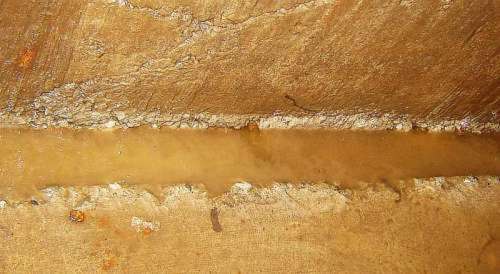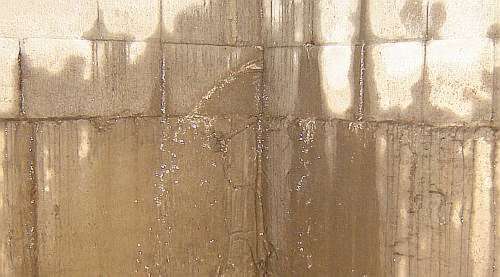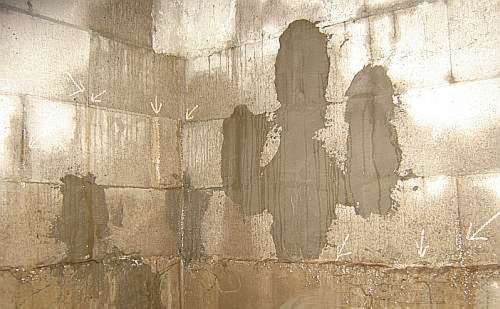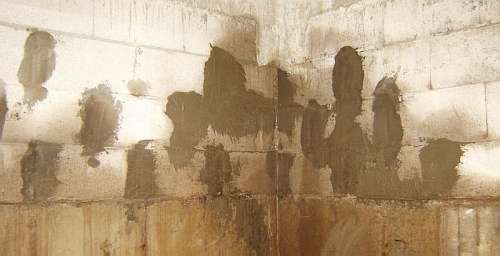This is page 2 of Basement Waterproofing. See pages 1 & 3
Before the rains started I did some inspecting. I discovered that MANY of the vertical joints in the cinder blocks were without mortar. Looks like the hydrostatic pressure and erosion over the years had taken their toll. I began to chisel out some of these joints to prepare them for hydraulic cement. I decided to put this on hold until I could see where the water was getting in. Nobody ever went down in the basement while it was raining and I was very curious what was going on.• And the rains came: I wasn’t expecting to have water in the basement so quickly. I had assumed that the water was only getting in through the walls through the blocks. The slab floor and the first three feet of the walls were suppose to have been one pour so I expected they were ‘safe’. Well, whatever the case, I was getting water in through the joint between the floor and wall. See the image below. Notice the “trough” that goes around the whole inner wall of the basement. You can also see the discoloration in the water where new water is entering into the basement.
• And the floods came: A week later we got hit with a huge storm. About 4 inches were dumped within an hour or so and the basement was a sieve! The water was literally spraying in, especially in the corner pictured below. All the rest of the basement just had slightly damp walls with some minor leaking. This was definitely where the biggest problem lied.
• I decided now was my chance to see how well the hydraulic cement worked. I found a chiseled out hole where water was spraying in. I mixed up the cement as suggested, rolled it into a ball and pressed it against the wall… Well, my first attempt failed miserably. I must not have put enough pressure, or fumbled too long with my cement ball but either way it got too wet and just came all apart. I tried again and attacked the wall much faster and pressed hard for 2 minutes (not so easy to do holding your hands above your head). It worked! Not really as clean as I had hoped, but if done correctly, and if the conditions exist (for example not in a tight area) then this could be a life saver.
• A few days later I went back down into the basement. The water had stopped spraying and now I knew exactly where to chisel and what holes to seal. I mixed up some hydraulic cement, but much wetter than they suggest, more like an oatmeal consistency. I forced it into the cracks as best I could with a trowel. NOTE: You gotta work FAST with this stuff. It really does set up quickly. Even when it is soupy it still only gives you about 3 minutes of play time. I probably should have chiseled out more cracks and plugged more holes, but I didn’t have time.
• The rains came again: Not as hard and as fast as last time, but enough to show me how well my plugs were holding up. First thing I noticed was that the water wasn’t spraying and that there wasn’t any water coming from the main holes as it was before. I did notice that the water had found other avenues of entry which I marked with chalk.

• Again I waited for the rains to die down and the water to stop dribbling in (yes, dribbling is much better than pouring). Oh, and good news, in a week or so we’ll have gutters on the house!
• I chiseled out the marked areas and filled them in with hydraulic cement. I also attempted to plug the hole in the floor where water was still pouring in pretty quickly. As before, because of the amount of water and difficulty of access I couldn’t get the cement to work its magic. I figured I probably could get it to work if I got a huge ball and plopped it down there, but I opted to be patient and fill it in as I had the others. Here is the updated picture (I would have done more but ran out of cement).

On to Page 3